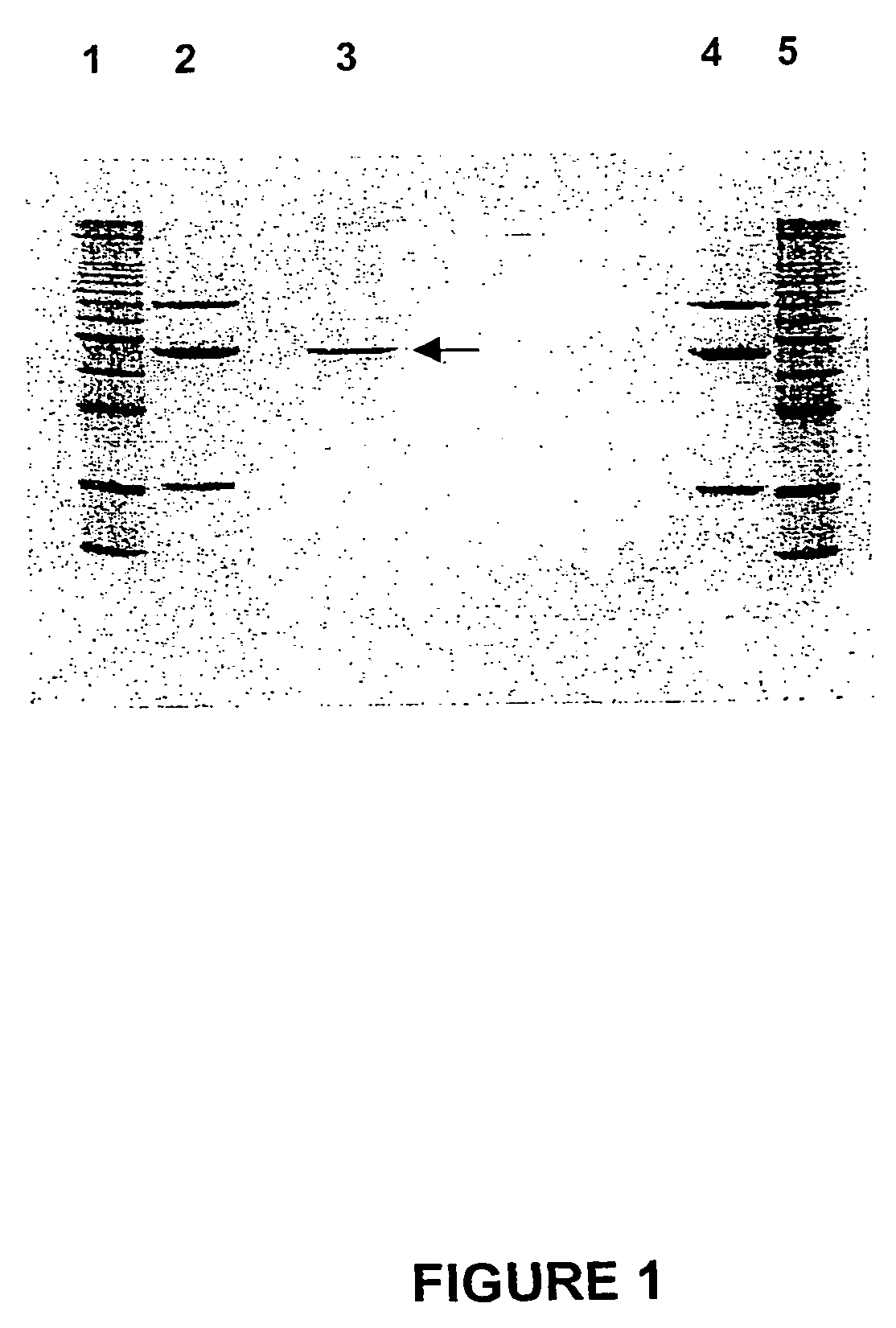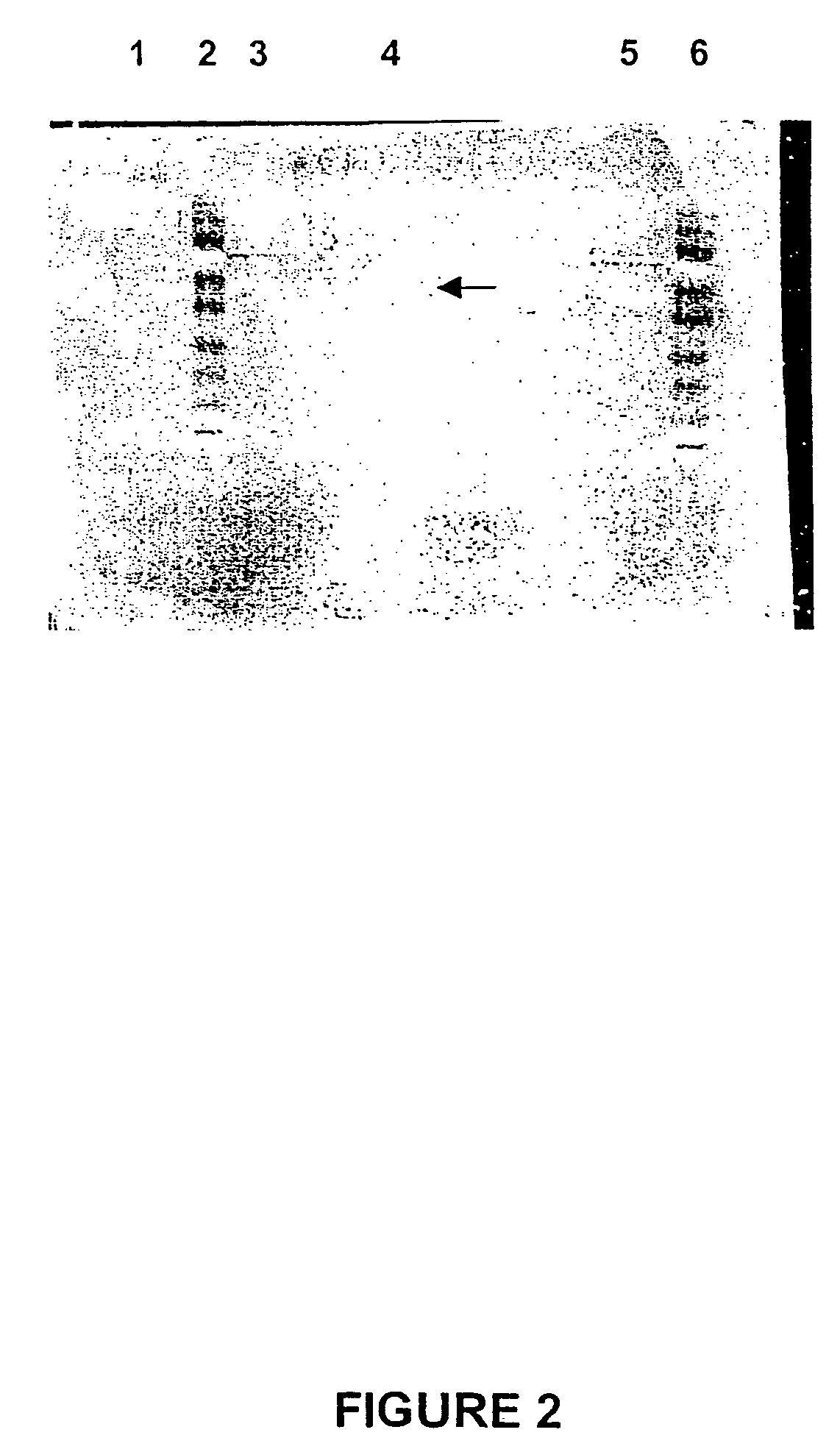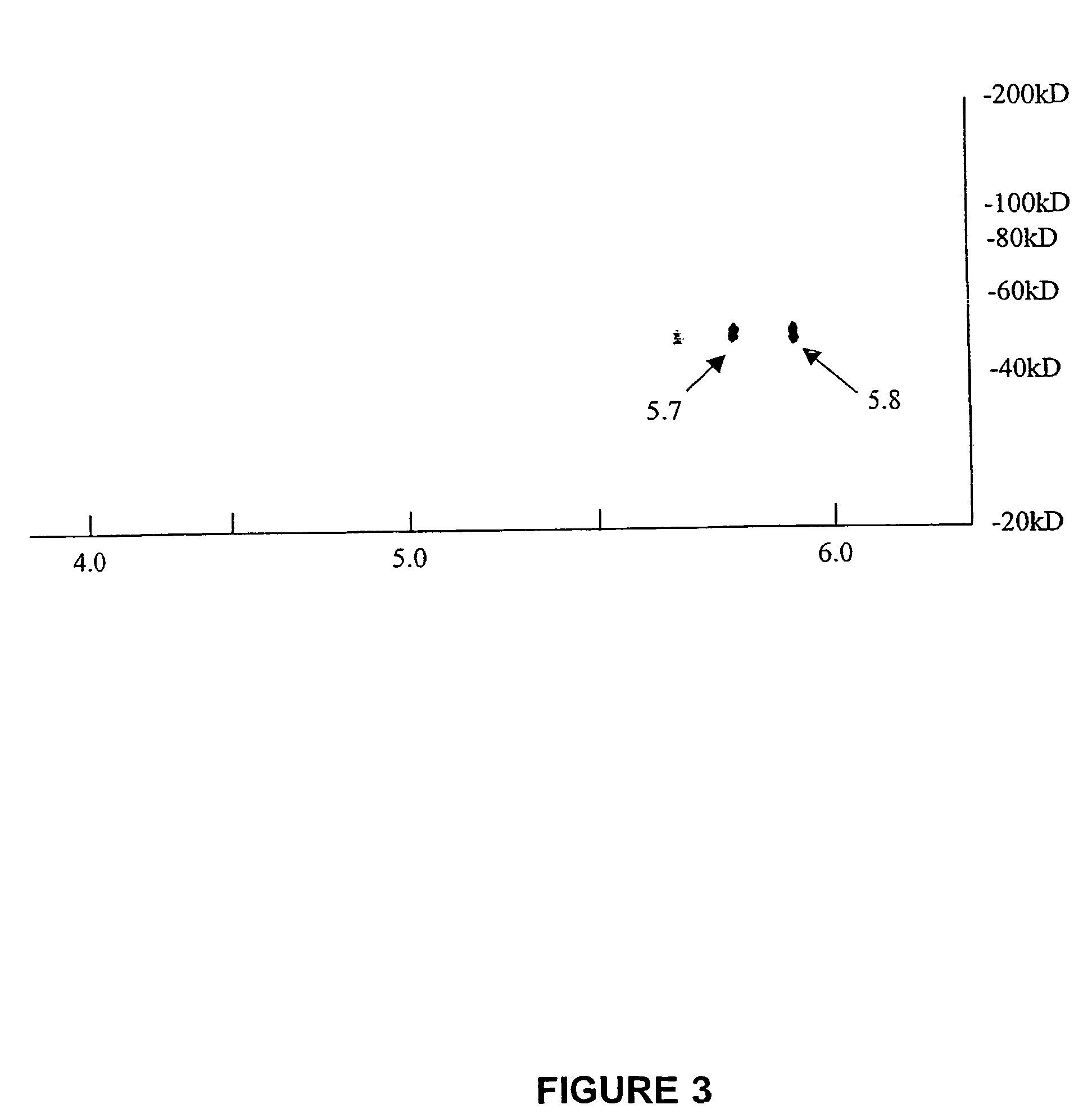Gene and uses therefor to modify pasture qualities of crops
a technology of anthocyanidin and gene, which is applied in the field of isolated leucoanthocyanidin reductase polypeptides, can solve the problems that the protein preparation substantially free of conspecific proteins for the purposes of enzyme assays may not be suitable for amino, and achieve the effect of reducing the severity or incidence of bloat in pasture animals
- Summary
- Abstract
- Description
- Claims
- Application Information
AI Technical Summary
Benefits of technology
Problems solved by technology
Method used
Image
Examples
example 1
Assay of Leucoanthocyanidin Reductase (LAR) Enzyme Activity
[0278]Leucoanthocyanidin reductase (LAR) was assayed using the following methods. Radioactivity labeled substrate had to be prepared and purified using radio-HPLC.
1. Substrates
[0279][4-3H]-2,3-trans-3,4-cis-leucocyanidin (cis-3,4-LC) was prepared by acid epimerization of the [4-3H]-2,3-trans-3,4-trans-leucocyanidin (i.e. trans-3,4-LC) formed by reduction of (+)-dihydroquercetin [i.e. (+)-DHQ] with sodium [3H]-borohydride, modified from the method of Kristiansen (1986). A solution containing 6.6 μmol (+)-DHQ in 250 μl of dry ethanol was added to 6.6 μmol of solid sodium [3H]-borohydride (500 mCi) and incubated at 20° C. for 2 hr.
[0280]The 3,4-cis-leucocyanidin was obtained by epimerization of the 3,4-trans-leucocyanidin following addition of 5 ml of 0.1% (v / v) acetic acid and incubation for 3–4 hr at 40° C. The epimerization was monitored using HPLC system III (see below) and was halted by freezing in liquid nitrogen and lyop...
example 2
Purification of Desmodium Leucoanthocyanidin Reductase (LAR)
[0297]Purification of D. uncinatum LAR was achieved using the steps described below. Purification of duplicate 100 g preparations of leaf material was carried out to the hydroxylapatite column stage, and then fractions containing LAR activity were pooled and carried forward as a single extract until LAR was purified to homogeneity.
[0298]Young unexpanded leaves from 100 g Desmodium uncinatum (cv Silverleaf) were harvested and stored at −80° C. When required, the leaf samples were warmed for about 30 min to bring their temperature from −80° C. to −20° C., and homogenized, in two batches, in a total volume of 200 ml of grinding buffer [50 mM Pi, 10% (w / v) glycerol, 1% (w / v) PEG6000, 1 mM Na2EDTA, 25 mM Na ascorbate, 5 mM DTT, 20 mM mercapto-ethanol, 2 μg / ml leupeptin, 1 μg / ml pepstatin, 1 μg / ml E64, 0.1 mM PMSF] all adjusted to pH 8 at room temperature with NaOH. The homogenate was filtered through Miracloth, and centrifuged a...
example 3
Amino Acid Sequence Analyses of Purified Desmodium LAR Peptide Fragments
1. Internal Amino Acid Sequences
[0312]Purified LAR protein was applied to a 12% (w / v) SDS / polyacrylamide gel that was subsequently stained with Coomassie G-250 (FIG. 1). Briefly 110 μl of the final protein concentrate was precipitated with 4 volumes of acetone at 70° C. for 30 min, cooled and centrifuged at 13,000 rpm in an Eppendorf centrifuge, and the pellet and dissolved in 20 μl of SDS buffer (Laemmli, 1970) and heated for 90 sec in a boiling water bath. The SDS protein solution was subjected to electrophoresis at 200V for 40 min as described by Laemmli (1970). The gel was stained with colloidal Coomassie Blue G250 (0.1% w / v) in 40% MeOH, 10% acetic acid for 30 min and washed extensively with MilliQ water overnight.
[0313]The amount of protein was determined by calibration against known 1 μg protein standards, comprising bovine serum albumin, ovalbumin, and soybean trypsin inhibitor proteins. Molecular weight...
PUM
| Property | Measurement | Unit |
|---|---|---|
| molecular weight | aaaaa | aaaaa |
| molecular weight | aaaaa | aaaaa |
| molecular weight | aaaaa | aaaaa |
Abstract
Description
Claims
Application Information
 Login to View More
Login to View More - R&D
- Intellectual Property
- Life Sciences
- Materials
- Tech Scout
- Unparalleled Data Quality
- Higher Quality Content
- 60% Fewer Hallucinations
Browse by: Latest US Patents, China's latest patents, Technical Efficacy Thesaurus, Application Domain, Technology Topic, Popular Technical Reports.
© 2025 PatSnap. All rights reserved.Legal|Privacy policy|Modern Slavery Act Transparency Statement|Sitemap|About US| Contact US: help@patsnap.com



